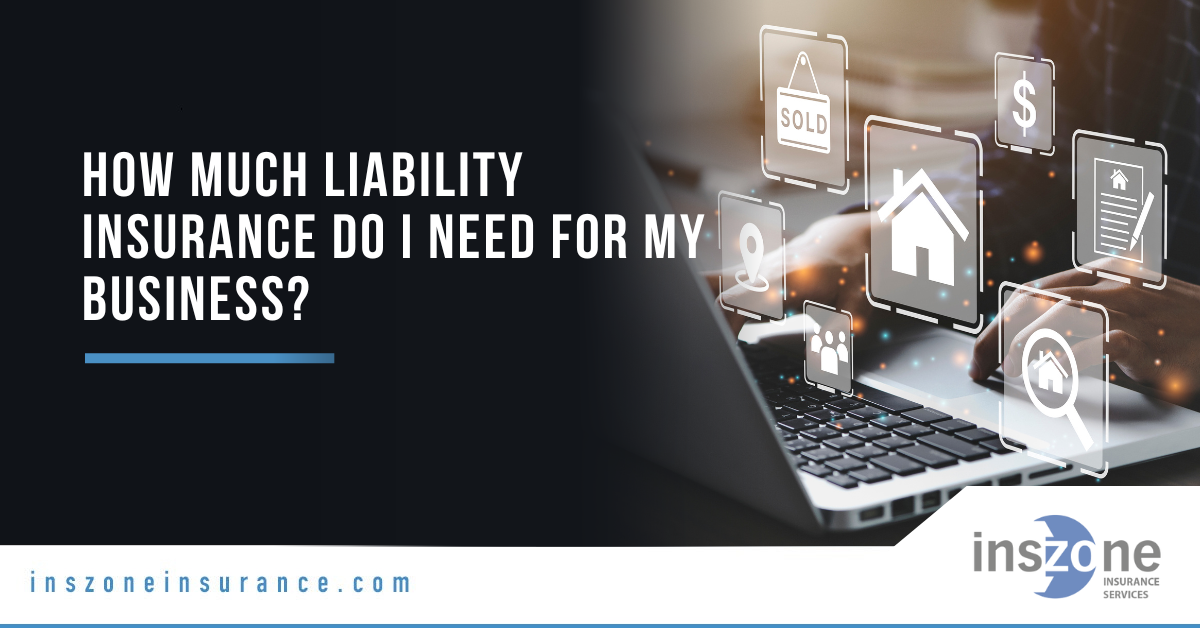When business owners ask, “How much liability insurance do I need?” the honest answer is: it depends. But you can take a structured, analytical approach to arrive at a figure that protects your assets, your operations, and your reputation. According to an article on Forbes Advisor, most small businesses spend an average of $42 per month while choosing standard coverage amounts of $1 million per occurrence and a $2 million aggregate policy limit for their general liability insurance coverage.
Why Liability Coverage Is Fundamental
Liability insurance protects you when your business is legally obligated to pay for damages or injuries caused by your operations, your products, or your professional work. These claims can arise from slip-and-falls, defective products, professional mistakes, or general accidents. Without proper coverage, even one claim could devastate a small business.
Key reasons every business needs robust liability coverage:
- Legal judgments and settlements can exceed your cash reserves.
- Costs associated with claims (attorneys, medical bills, lawsuits) can be hidden and very high.
- Many landlords, clients, and contracts require proof of liability insurance.
- Coverage safeguards your reputation and demonstrates professionalism and financial responsibility.
Types of Liability Insurance Every Business Should Know
No single policy will cover all risks. Here are the most common liability coverages businesses should consider:
- General Liability Insurance – protects against third-party bodily injury, property damage, and personal/advertising injury.
- Professional Liability (Errors & Omissions) – covers claims arising from mistakes, failures, or negligence in the services you provide.
- Employer’s Liability / EPLI (Employment Practices Liability Insurance) – protects your business from claims related to employment issues like discrimination, harassment, wrongful termination, etc.
- Product Liability – covers injury or damage caused by products you manufacture, distribute, or sell.
- Commercial Auto Liability – required for vehicles used in business operations covering accidents and injuries.
- Cyber Liability & Data Breach Insurance – protects against losses from data breaches, cyberattacks, and associated liabilities.
Each of these policies addresses a different slice of liability risk; many businesses need a combination to cover all exposures.
How Much Liability Insurance is Needed?
When choosing liability limits, there’s no single number that fits every business. The right coverage depends on your size, industry, operations, and financial exposure. To set appropriate limits, start by answering these foundational questions:
What Is Your Business Worth?
Understanding your business’s total value is the foundation for setting liability limits. This includes both tangible assets (buildings, inventory, equipment) and intangible ones (brand reputation, customer relationships, intellectual property).
If your business were to face a severe claim that forces liquidation, how much of those assets could be at risk? Liability insurance should be robust enough to cover a significant portion of that exposure.
For example, a business with $3 million in assets and steady revenue likely needs higher limits than a startup with minimal physical assets. As a general rule, liability limits should be high enough to protect your balance sheet and future earnings—not just your current cash flow.
What’s Your Upper Risk Exposure in a Worst-Case Scenario?
Every business should model its potential “worst case.” Ask yourself: If everything went wrong, what could the total damages be?
This scenario planning helps you identify your highest possible exposure—such as a customer injury, product defect, or professional error leading to financial loss. For some companies, a single lawsuit can exceed $1 million in settlements, defense costs, and reputational damage.
Think beyond what’s likely and plan for what’s possible. Legal fees alone in a liability case can exceed $100,000, and judgments can climb much higher. Your policy should be strong enough to handle that level of impact, especially in industries prone to litigation.
What Are Your Contractual Obligations?
Many business contracts, leases, or vendor agreements include insurance requirements. You may be required to carry certain minimum limits—often written as “$1 million per occurrence / $2 million aggregate”—to do business.
Ignoring these terms can put your contracts, bids, or partnerships at risk. For instance, commercial landlords typically require tenants to maintain liability coverage naming them as “additional insureds.” Likewise, subcontractors often need to match the general contractor’s insurance limits before starting work.
If you work with government agencies or large corporations, review your contracts closely. These clients often set higher minimums or require specific endorsements to qualify for projects.
What’s Your Business Activity and Industry Standard?
Your industry plays a major role in determining the right liability limits. High-risk sectors—such as construction, health care, manufacturing, and transportation—carry higher potential for claims and thus require greater protection.
For example:
- A construction company may face claims related to property damage or worker injury, requiring at least $1M per occurrence with an umbrella policy for added protection.
- A medical practice might need several million in professional liability coverage due to the potential for large malpractice suits.
- A retail business may prioritize premises liability for slip-and-fall risks but need lower professional coverage.
Consulting with an insurance advisor familiar with your field helps benchmark your limits against what’s typical for businesses of similar size and scope.
Cash Flow vs. Cost-Benefit Tradeoff
Every increase in coverage comes with a cost—but underinsuring can be far more expensive in the long run. The goal is to strike a balance between adequate protection and sustainable premium payments.
For smaller businesses or startups, it’s common to start with moderate limits (for example, $1M/$2M general liability) and layer additional coverage like an umbrella policy as operations grow. For larger or high-revenue businesses, higher limits—$5 million or more—are often appropriate.
It’s also important to evaluate your deductible or self-insured retention (SIR). A higher deductible can reduce premiums, but make sure your cash flow can handle that out-of-pocket cost in the event of a claim.
Review your limits annually to account for growth, inflation, or changes in your risk exposure. A policy that fit your needs five years ago might not be sufficient today.
Factors That Drive Premiums and Limits
Your required coverage and premium costs can vary widely between businesses, even within the same industry. Insurers use dozens of variables to determine both your risk level and your pricing. Understanding these key factors helps you anticipate costs, negotiate intelligently, and make informed decisions about your insurance portfolio.
Business Size and Revenue
The larger your business operations and revenue, the higher your potential liability exposure. Insurers assume that a company serving more customers or generating higher sales faces greater opportunities for claims.
For example, a small retail shop with a handful of clients might carry $1 million in liability coverage, while a regional contractor earning $10 million in annual revenue might need $5 million or more. Larger organizations also tend to operate across more locations, handle more data, and manage more contracts—all of which raise the risk profile.
When evaluating coverage limits, think proportionally. Your policy should be able to absorb a claim that matches the scale of your business—not just its current cash reserves.
Number of Employees
Each employee represents an additional potential source of liability, whether through errors, accidents, or professional interactions. More employees mean a greater chance of something going wrong—from a slip-and-fall in the warehouse to a client interaction that leads to a lawsuit.
Employment Practices Liability Insurance (EPLI) costs, in particular, increase with staff count since claims for harassment, discrimination, or wrongful termination often rise in correlation with workforce size. A five-person office may pay a modest premium, while a 200-person operation will see substantially higher costs.
Even if you have a small team, it’s smart to review your policies when hiring new employees or opening additional departments, as that expansion can trigger a need for higher limits.
Industry Risk Profile
No two industries face the same level of risk. Insurers assign “class codes” to rate businesses within each sector, taking into account the types of claims historically associated with that industry.
- High-risk industries such as construction, manufacturing, healthcare, and transportation often see higher premiums due to physical hazards, regulatory oversight, and the potential for bodily injury or property damage.
- Moderate-risk industries like retail or hospitality balance both customer and employee exposures.
- Low-risk industries such as consulting or professional services generally have fewer physical risks but may still face exposure through professional liability or cyber risks.
If your business spans multiple sectors—for instance, a construction firm that also designs plans—you may need a mix of general and professional liability coverage to address your full risk profile.
Location and Jurisdiction
Where your business operates can dramatically affect your insurance premiums and policy requirements. Some regions experience higher litigation rates or larger jury settlements, leading insurers to charge more to offset that exposure.
For example:
- Businesses in California, New York, or Florida often face higher premiums due to legal environments with more frequent or costly lawsuits.
- Companies in coastal or disaster-prone areas may see additional surcharges tied to storm, flood, or fire risk.
- Local economic conditions also influence rates—urban areas tend to have higher costs of living and repair, which in turn increases claim payouts.
It’s also worth noting that some states mandate specific coverage minimums or reporting standards. Working with a local broker ensures compliance and helps you avoid unexpected coverage gaps.
Claims History and Loss Record
Your claims history tells insurers how much risk you represent. A business with frequent or costly past claims is statistically more likely to have future ones, resulting in higher premiums. Conversely, maintaining a clean loss record can earn discounts and better policy terms.
Underwriters review both the frequency (how often you file claims) and severity (how large those claims are). Two small claims might not hurt you much, but one large settlement can drive up rates for years.
To keep premiums manageable, adopt a proactive risk management strategy:
- Conduct regular safety inspections.
- Train employees on best practices and compliance standards.
- Document incident prevention efforts.
- Resolve small issues internally before they escalate into formal claims.
Over time, this approach signals reliability to your insurer and can help lower your costs.
Contractual or Lease Requirements
Many commercial agreements require proof of specific liability limits. For instance, a landlord may demand $2 million in general liability coverage, or a client contract might specify $5 million in professional liability.
These obligations can dictate your coverage minimums, even if your actual risk might justify lower limits. In industries like construction, technology, and manufacturing, contractual insurance requirements are common and non-negotiable.
Always review these clauses carefully—failure to meet required limits can result in lost contracts or breach-of-agreement penalties. Your broker can help ensure that your coverage meets or exceeds all third-party obligations while staying cost-efficient.
Policy Structure: Deductibles, Limits, Endorsements, and Exclusions
Finally, how you structure your policy has a major influence on both cost and protection. The key variables include:
- Deductibles: The amount you pay out of pocket before your insurer covers the rest. Higher deductibles lower your premiums but increase financial responsibility per claim.
- Limits: Your maximum coverage amount per claim and in total (aggregate). Higher limits mean greater protection but also higher premiums.
- Endorsements: Optional add-ons that customize your coverage—for example, adding cyber protection or hired/non-owned auto liability.
- Exclusions: The situations or damages your policy does not cover. Always review these carefully, as they define your true risk exposure.
Balancing these elements requires careful planning. A skilled insurance advisor can help you build a layered policy structure—combining deductibles, endorsements, and umbrella coverage—to maximize protection at a manageable cost.
Practical Steps to Arrive at a Liability Strategy
Designing a strong liability insurance strategy isn’t about guessing a number—it’s about understanding your unique risks, financial capacity, and industry requirements. Whether you’re working independently or alongside a licensed insurance broker, the following process will help you make data-driven, defensible decisions about your coverage.
Conduct a Comprehensive Risk Audit
Start by identifying and mapping every possible source of liability exposure. Think of this as your “risk inventory.”
Your audit should include:
- Physical premises – Are there slip, trip, or fall risks for visitors, vendors, or employees?
- Operations – Do your daily activities involve hazardous equipment, transportation, or customer interaction?
- Services – Could professional advice, design work, or consultation lead to financial loss for a client?
- Products – If you manufacture, sell, or distribute physical goods, could they cause harm or damage?
- People – What are your HR exposures, from hiring and supervision to termination practices?
Document every risk category and consider the probability and potential impact of each. This assessment provides the foundation for determining which liability coverages you need and how much protection each area requires.
Gather Industry and Regional Benchmarks
Once you’ve outlined your risks, compare your findings to standards within your industry and geographic area. Benchmarks help ensure you’re not underinsured compared to your peers.
You can gather benchmarks from:
- Trade associations and professional organizations – Many publish insurance guidelines or member surveys.
- Regulatory agencies and licensing boards – Some industries, such as construction or healthcare, have mandated liability minimums.
- Insurance carriers and brokers – They can share anonymized data about typical coverage limits and claims trends within your sector.
Regional data is equally important. Liability trends vary by state—what’s sufficient in Iowa may be inadequate in California or New York, where litigation and claim settlements are often higher. Benchmarking ensures your limits reflect your actual risk environment.
Create “Worst-Case” Scenario Models
Scenario planning is one of the most powerful tools in liability management. Ask yourself: What would happen if the worst occurred?
Develop three risk scenarios:
- High severity, low probability – e.g., a catastrophic injury claim or large-scale data breach.
- Moderate severity, moderate probability – e.g., employee injury or a product defect affecting a small batch.
- Low severity, high probability – e.g., routine customer slips, minor property damage, or delivery accidents.
Assign estimated financial impacts to each scenario. Include not only damages or settlements but also legal defense costs, lost income, and reputational damage. When you see the real financial exposure on paper, it becomes easier to justify higher coverage limits—or identify where a smaller policy will suffice.
Plot Cost vs. Coverage Curves
Every additional dollar of coverage comes at a cost—but not always a linear one. Premiums often increase gradually for the first few million in coverage, then more sharply beyond certain thresholds.
By comparing how your premiums change at various limit levels, you can identify the “sweet spot” where cost aligns with meaningful risk reduction. For example, moving from $1 million to $2 million in liability coverage may add only a small percentage to your premium but could significantly expand your protection.
Your broker can help create a cost-to-coverage matrix to visualize these tradeoffs. This data-driven approach ensures you’re not overpaying for marginal protection while still covering your core exposures.
Select Your Policy Mix
No single policy covers all liability risks. To build a comprehensive safety net, combine multiple types of coverage tailored to your operations.
A strong liability portfolio might include:
- General Liability Insurance – Covers third-party bodily injury, property damage, and advertising injury.
- Professional Liability (Errors & Omissions) – Protects against claims related to negligence or poor advice.
- Product Liability Insurance – Essential for manufacturers and retailers whose products could cause harm.
- Commercial Auto Insurance – Covers accidents involving business-owned or operated vehicles.
- Employment Practices Liability Insurance (EPLI) – Addresses claims of discrimination, harassment, or wrongful termination.
- Cyber Liability Insurance – Covers data breaches, ransomware, and other cyber threats.
Each policy fills a different gap. The key is ensuring they work together, without unnecessary overlap or uncovered areas. Review your operations holistically—many businesses need at least three of these coverage types to be fully protected.
Add Umbrella or Excess Liability
Even with robust primary policies, catastrophic claims can exceed your standard limits. Umbrella or excess liability coverage provides an extra layer of protection beyond your base policies.
For example, if your general liability coverage caps at $1 million per occurrence but a lawsuit costs $2.5 million, your umbrella policy can bridge the $1.5 million gap. The best part? Umbrella policies are usually cost-effective compared to increasing each underlying policy’s limits individually.
As a rule of thumb:
- Small businesses may start with $1–$2 million in umbrella coverage.
- Mid-sized or high-risk operations often carry $5–10 million or more.
This final layer gives your business financial stability during high-impact, low-frequency events that could otherwise threaten long-term viability.
Common Mistakes (and How to Avoid Them)
- Relying on a single “general liability” policy when you need multiple types of liability coverage.
- Choosing coverage limits based solely on cost, without doing a risk assessment first.
- Failing to renew or review policies annually—your risk profile changes.
- Ignoring contractual or lease requirements that mandate higher coverage.
- Overlooking umbrella or excess policies when your exposure exceeds primary policy limits.
Your liability insurance strategy should match your business’s real-world risk, not just what looks affordable on paper. By combining the right types of liability coverage (general, professional, auto, cyber, etc.), assessing your exposures via scenario modeling, and layering an umbrella policy, you can protect your business from serious financial harm.
At Inszone Insurance, we help businesses at every stage build liability insurance strategies tailored to their size, exposure, and growth path. If you’re ready to find the right coverage, reach out to our expert team and let us design a plan that gives you confidence for the future.





